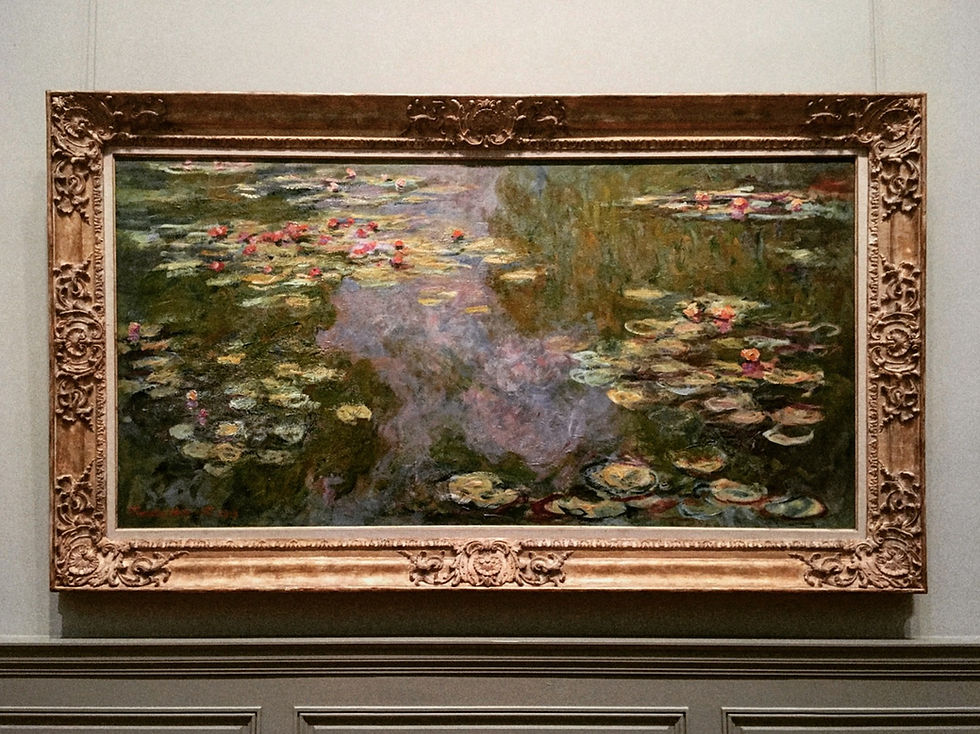Claude Monet: The Father of Impressionism
- Kathryn Houghton

- May 20, 2021
- 2 min read

Oscar-Claude Monet is one of the most prominent founders of French Impressionism. He has been described as “the driving force behind Impressionism". A crucial part of Impressionism is the understanding of the effects of light on local color and the comparison of colors within each other and their objects.
Monet not only contributed to this movement but made breakthroughs for multiple new painting methods and techniques.
Monet spent many days on the River Seine for the duration of around five years. He spent that time on his little floating studio, where he made progress on light and reflections. He started to think in terms of color and shape as opposed to scenes and objects.

When he would visit the Louvre, while his fellow artists would be recreating works from the great masters around them, Monet would be by the windows painting what he saw outside.
As far as we know, there are some 2,500 paintings, drawings, and pascals from Monet. The number is undoubtedly larger than this, however, as many have been lost over the years along with the paintings Monet had destroyed himself. Just one painting of his has sold for $80.5 million in London.
Thanks to Monet, asides from sunflowers, water lilies are the most iconic objects in impressionism. He had painted over 250 of them.
There was a future Impressionist group that consisted of Monet, Auguste Renoir, and Edouard Manet. They were all close friends who had an eventful meeting in 1872, where they would create their first work together called ’Impression, Rising Sun’ that was responsible for the very name of their movement. They would go on to create six exhibitions until 1882.

Despite traveling all around France and England, Monet had an undeniable love for Giverny. He bought his house there in 1890 and began working on the gardens surrounding his home. This is where some of his most famous works would be created like the White Water Lily series.
To highlight Claude Monet would be like highlighting nature in its entirety. It feels nearly impossible to do. He has shaped so many ideas and techniques that make art what it is today. He has inspired feelings of romance and creation, making each one of us contemplate how we look at the universe.
Perhaps we all admire those who can create what we never could, and I definitely attest to that here. Monet seems to change with the wind in the way I view his paintings. I find chaos, beauty, detail, and haziness all at once when seeing his works. He gives me a sense of peace no other artist can, and for that, I’m ever grateful.

Referenced Works:
- Wikipedia, ”Claude Monet“ November 29, 2020
- C Monet Gallery, Templeton Reid LLC, October 23, 2008
- Paris City Vision, “Claude Monet’s Biography”
Weeping Willow (1918) Columbus Museum of Art, Ohio
View of Le Havre (1873) National Gallery, London
La Pointe De La Heve (1864) National Gallery, London





.png)



Hello! Just to clarify, isn’t the painting Impression, Sunrise by Claude Monet only?